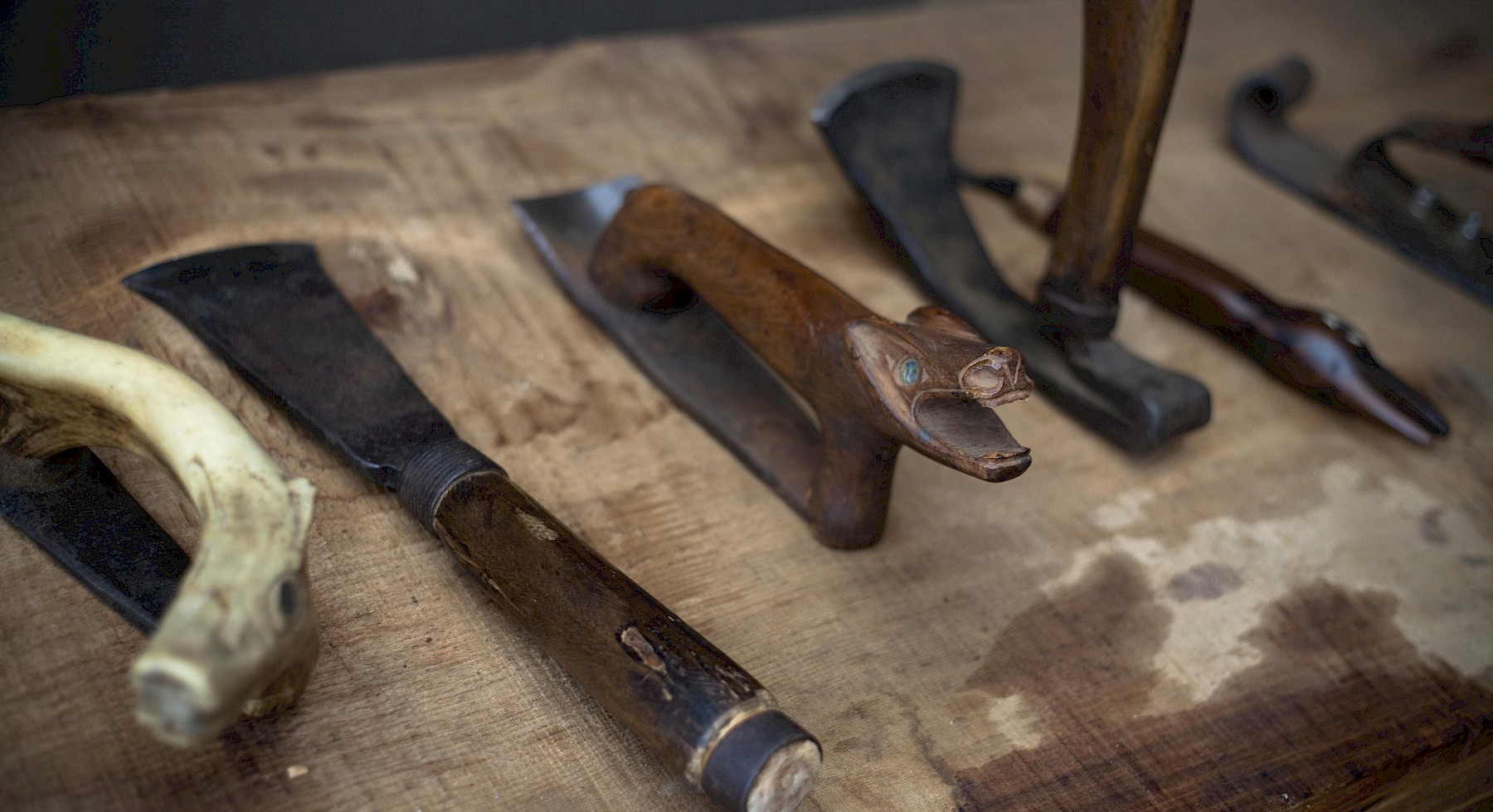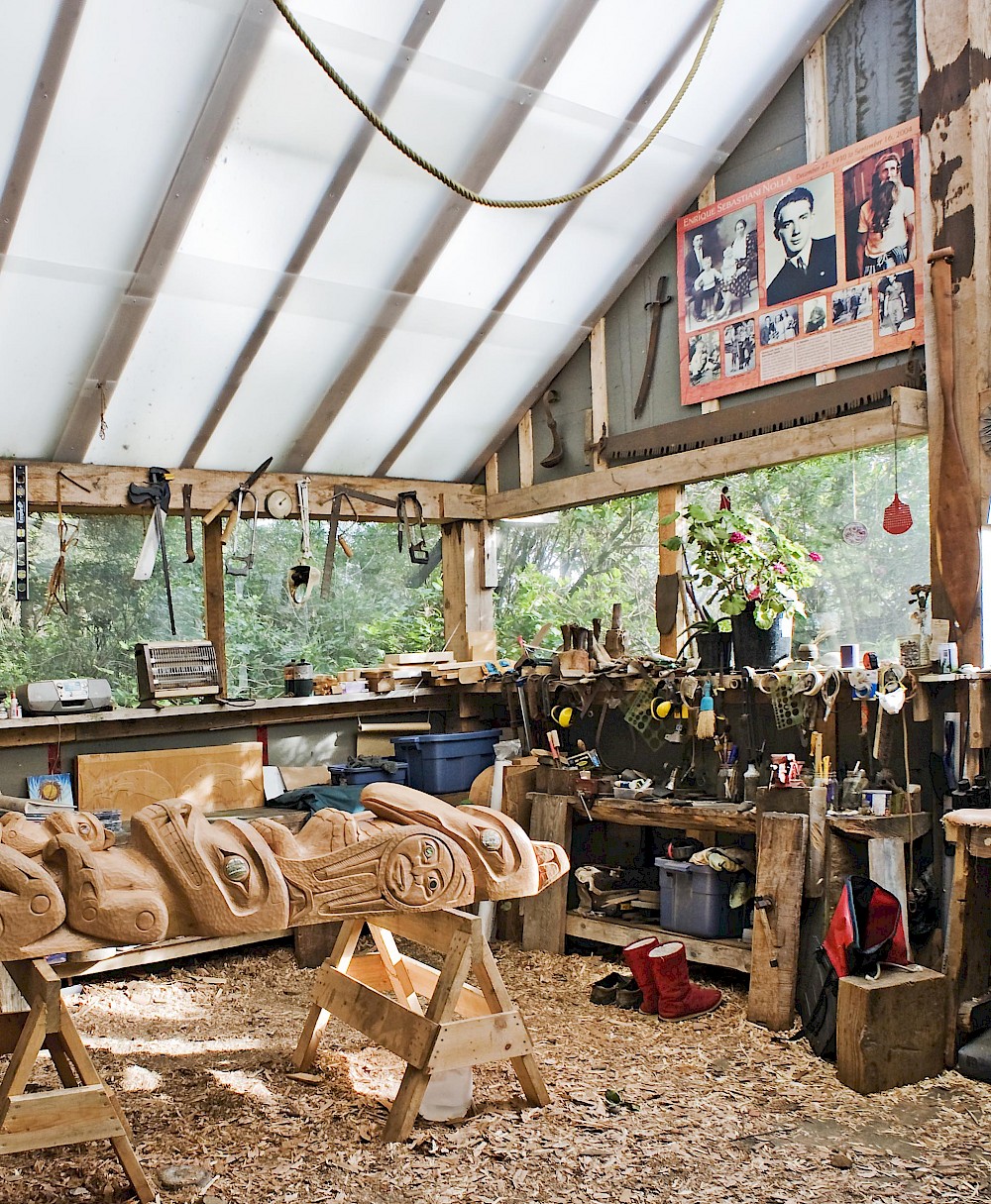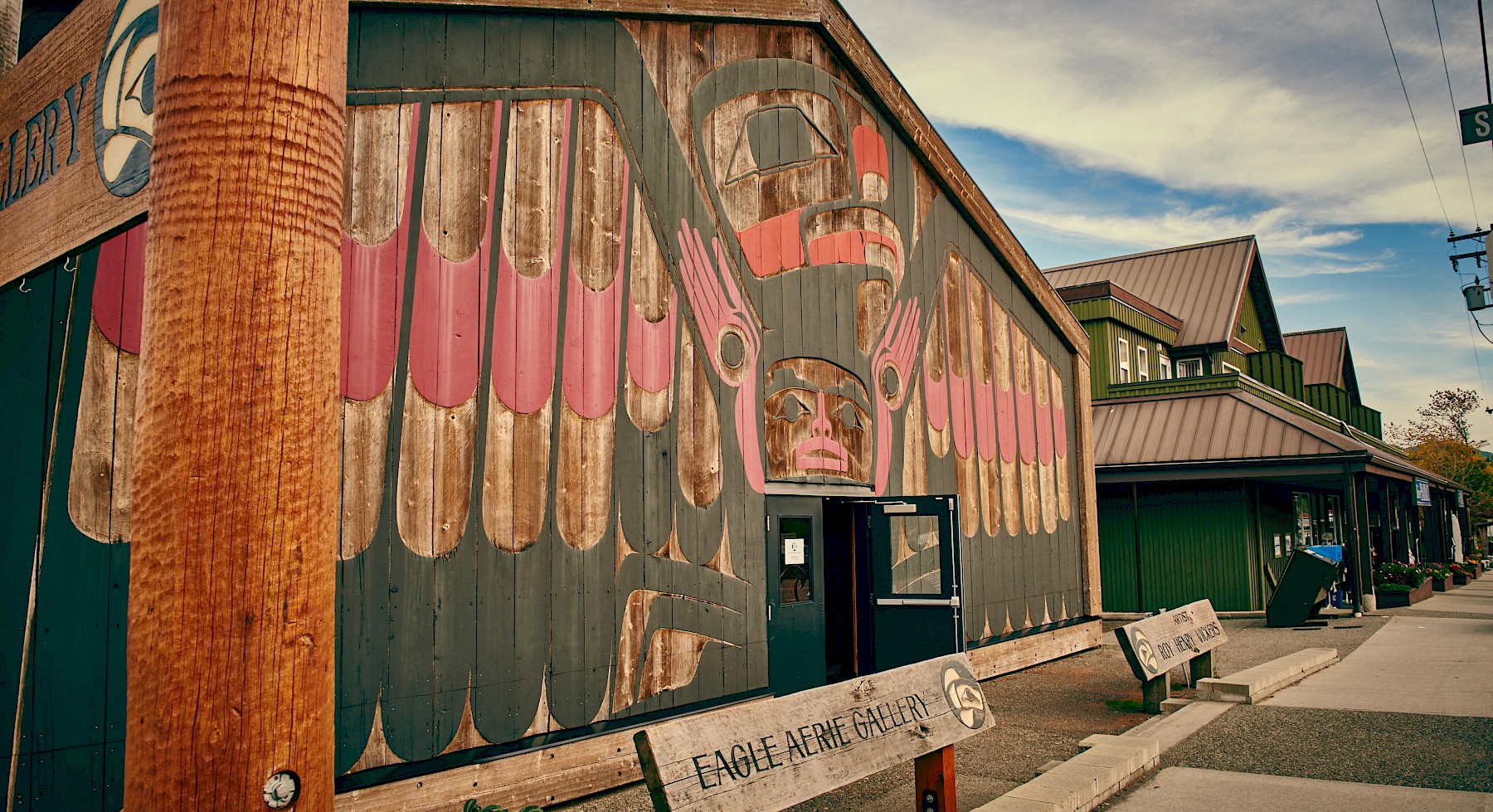Pacific Rim Arts Society | Henry Nolla
Article Information & Social Sharing
Original Article by Alva and Nuri Nolla for the Pacific Rim Arts Society
Henry was born Enrique Sebastian Nolla Johanssen December 27th, 1930 in Barcelona, Spain, to a Spanish father, Jose Sebastian Nolla Roca and a Swedish mother, Hanna Sophia Johanssen. He was raised primarily in Spain, where his three younger sisters, Nuria, Ana Mari, and Marta were born, and he also spent time with his mother's family in Sweden. Henry showed an interest in carving at an early age, whittling with his pocket knife was a favourite childhood pastime.
Later in his childhood, his mother took Henry and his sisters to her family's home in Sweden to escape the worst years of the Spanish civil war. There, he spent many happy hours with his Swedish grandfather, a skilled furniture maker who carved decorative relief work. From him, Henry learned how to use a variety of tools, and refined his burgeoning woodworking skills. After the Spanish civil war, the family moved back to Spain where, in his teenage years, he apprenticed as a blacksmith, learning to design and forge architectural wrought iron work and tool making. He completed his apprenticeship then moved to Sweden and went to work in the woods, hand logging in Northern Sweden. He would later take what he had learned working with metals to create jewelry, elaborate knives and swords inspired by science fiction novels. He also created his own carving tools in his blacksmith shop behind his house at Chesterman Beach.

He immigrated to Canada in 1957 to settle in Northern Ontario. Here, he met and married Katharina Refli, who shared with him a love of the outdoors, a creative and adventurous spirit, and a horror of war. She too, had experienced growing up in a country at civil war and wished for peace. Together they had two children, Alva and Mark.
Henry came to the West Coast of Vancouver Island in 1965 when he traveled ahead of his young family to take a job welding at a local mine. Henry had a variety of different jobs over the years, in many areas, and enjoyed the challenge of learning new skills and adapting them to new applications, something he excelled at.
He moved onto Chesterman's Beach in the early 70's, when he was hired by Don McGinnis to construct the McDiarmid family cabin on the point. He simultaneously built an A-frame cabin for himself with the help of his son Mark and his daughter, Alva. He became friends with the McDiarmids, staying on to caretake the property. The "temporary" cabin remained his home for over 30 years. In 1983 in this home, Henry and his partner Joanald Dumont had his third child, Nuri.


When he first moved to Chesterman Beach, he was carving mainly bowls and other dishes, some in the Scandinavian style from his childhood, others in an African style, but most in the West Coast Indigenous style. In the early 80's he began carving with First Nations artist Roy Henry Vickers, learning more about Nuu-chah-nulth design. They were good friends and worked together for over 15 years on many projects, including numerous totem poles, the interior and exterior carvings of the Eagle Aerie Gallery, and the Tofino Welcome sign.

Eventually, he focused more exclusively on his own carving, working in a carving shed he build just down the beach from his house. There he carved bowls, masks, house posts, doors, decorative panels, sculptures, as well as various works for the Wickaninnish Inn. Henry's work is in private collections, museums and public buildings all over the world.
His greatest legacy, however, is with all the people he taught to carve over the years. Henry encouraged people to develop their creativity, whatever form it took. Henry had many students, including his own son Mark Nolla, who became a skilled carver in his own right and did much of the adzing in the Wickaninnish Inn at Chesterman Beach. His last student, Lyne Des Rosiers, continued to work and teach out of the carving shed until moving to Port Alberni with her young family in 2010. Henry's tradition of welcoming visitors to the Carving Shed lives on today with resident artist Feather George Yearsley, who carved alongside Henry for many years.
Henry passed away in 2004. He meant so much to so many.
Henry's carving works can be found throughout Tofino. You are welcome to explore these public sites:
Wickaninnish Inn - explore the Inn's two buildings where Henry's carved doors and architectural details are enjoyed throughout.
Carving Shed - follow the beach path from the Wickaninnish Inn to Henry's shed on Chesterman Beach where carvers are working on projects daily.
Tofino's Welcome Sign - in the downtown Village Green. This sign was designed & crafted by Henry Nolla and Roy Henry Vickers.
Eagle Aerie Gallery - 350 Campbell Street. This handcrafted building has architectural detail inside & out, and several feature carvings by Henry Nolla.
Common Loaf Bakeshop - 180 First Street. Posts are hand adzed by Henry, creating a 'temple' effect in the seating area.
Remote Passages - 71 Wharf Street (on the water). Carvings by Henry are displayed in the office.
Paricif Rim National Park Reserve - Henry Nolla's hand adzed posts are featured in the main building of the Kwisitis Visitor's Centre.


